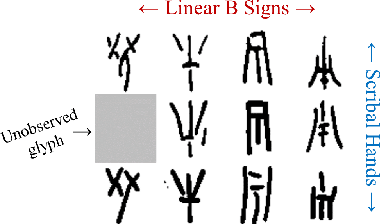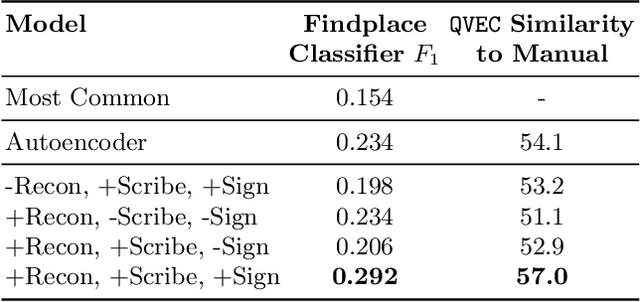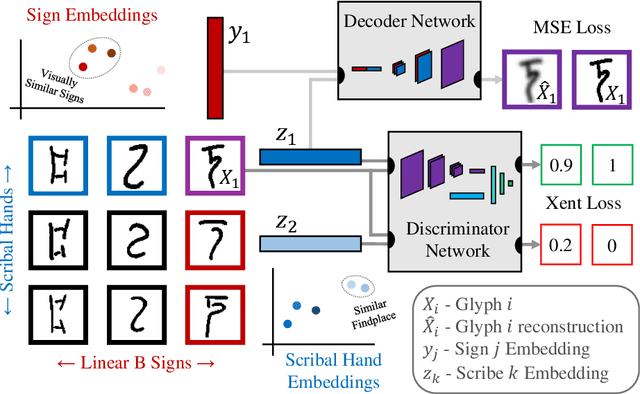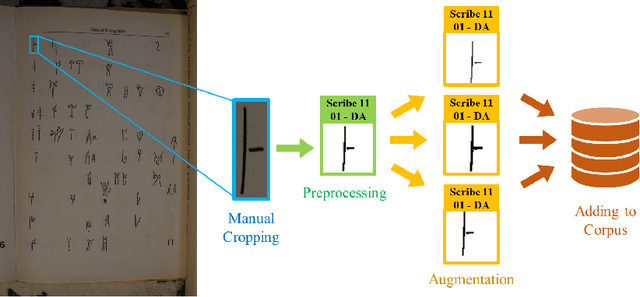Neural Representation Learning for Scribal Hands of Linear B
Paper and Code
Jul 14, 2021



In this work, we present an investigation into the use of neural feature extraction in performing scribal hand analysis of the Linear B writing system. While prior work has demonstrated the usefulness of strategies such as phylogenetic systematics in tracing Linear B's history, these approaches have relied on manually extracted features which can be very time consuming to define by hand. Instead we propose learning features using a fully unsupervised neural network that does not require any human annotation. Specifically our model assigns each glyph written by the same scribal hand a shared vector embedding to represent that author's stylistic patterns, and each glyph representing the same syllabic sign a shared vector embedding to represent the identifying shape of that character. Thus the properties of each image in our dataset are represented as the combination of a scribe embedding and a sign embedding. We train this model using both a reconstructive loss governed by a decoder that seeks to reproduce glyphs from their corresponding embeddings, and a discriminative loss which measures the model's ability to predict whether or not an embedding corresponds to a given image. Among the key contributions of this work we (1) present a new dataset of Linear B glyphs, annotated by scribal hand and sign type, (2) propose a neural model for disentangling properties of scribal hands from glyph shape, and (3) quantitatively evaluate the learned embeddings on findplace prediction and similarity to manually extracted features, showing improvements over simpler baseline methods.
 Add to Chrome
Add to Chrome Add to Firefox
Add to Firefox Add to Edge
Add to Edge